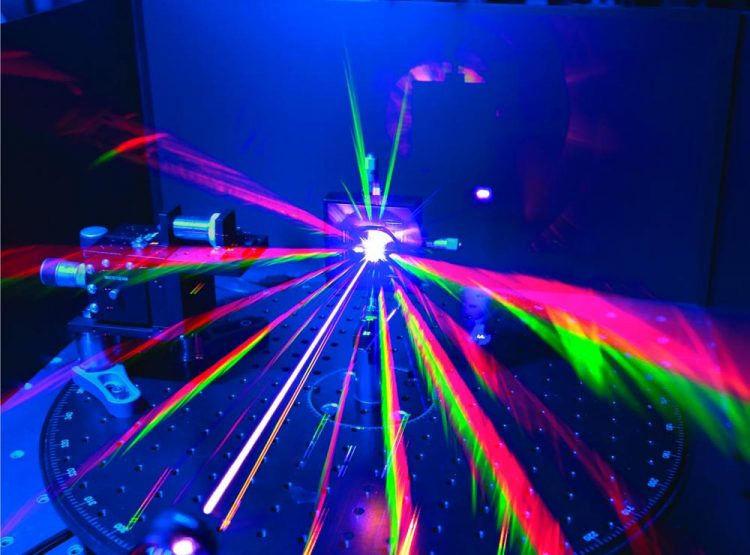Scientists create a nanomaterial that is both twisted and untwisted at the same time

A nanomaterial developed at University of Bath allows for incredibly sensitive detection of the direction molecules twist using laser light. Credit: Ventsislav Valev and Alex Murphy
A new nanomaterial developed by scientists at the University of Bath could solve a conundrum faced by scientists probing some of the most promising types of future pharmaceuticals.
Scientists who study the nanoscale – with molecules and materials 10,000 smaller than a pinhead – need to be able to test the way that some molecules twist, known as their chirality, because mirror image molecules with the same structure can have very different properties. For instance one kind of molecule smells of lemons when it twists in one direction, and oranges when twisted the other way.
Detecting these twists is especially important in some high-value industries such as pharmaceuticals, perfumes, food additives and pesticides.
Recently, a new class of nanoscale materials have been developed to help distinguish the chirality of molecules. These so-called 'nanomaterials' usually consist of tiny twisted metal wires, that are chiral themselves.
However, it has become very hard to distinguish the twist of the nanomaterials from the twist of the molecules they are supposed to help study.
To solve this problem the team from the University of Bath's Department of Physics created a nanomaterial that is both twisted and it is not. This nanomaterial has equal number of opposite twists – meaning they cancel each other out. Usually, upon interacting with light, such material appears without any twist; how then could it be optimised to interact with molecules?
Using a mathematical analysis of the material's symmetry properties, the team discovered a few special cases, which can bring the 'hidden' twist to light and allow very sensitive detection of chirality in molecules.
Lead author Professor Ventsislav Valev, from the University of Bath Department of Physics, said: “This work removes an important roadblock for the entire research field and paves the way to ultra-sensitive detection of chirality in molecules, using nanomaterials.”
PhD student Alex Murphy, who worked on the study, said: “Molecular chirality is an amazing property to study. You can smell chirality, since the same but oppositely twisted molecules smell of lemons and oranges. You can taste chirality, since one twist of Aspartame is sweet and the other is tasteless. You can feel chirality, since one twist of menthol gives a cool sensation to the skin while the other does not. You touch chirality expressed in the twist of seashells. And it is great to see chirality expressed in its interactions with the colours of laser light.”
###
The study is published in the journal Nanoscale Horizons. This study was made available online in May 2019 ahead of final publication in issue this month. The research was funded by the Royal Society, the Engineering and Physical Sciences Research Council, and the Science and Technology Facilities Council.
Media Contact
All latest news from the category: Materials Sciences
Materials management deals with the research, development, manufacturing and processing of raw and industrial materials. Key aspects here are biological and medical issues, which play an increasingly important role in this field.
innovations-report offers in-depth articles related to the development and application of materials and the structure and properties of new materials.
Newest articles

NASA: Mystery of life’s handedness deepens
The mystery of why life uses molecules with specific orientations has deepened with a NASA-funded discovery that RNA — a key molecule thought to have potentially held the instructions for…

What are the effects of historic lithium mining on water quality?
Study reveals low levels of common contaminants but high levels of other elements in waters associated with an abandoned lithium mine. Lithium ore and mining waste from a historic lithium…

Quantum-inspired design boosts efficiency of heat-to-electricity conversion
Rice engineers take unconventional route to improving thermophotovoltaic systems. Researchers at Rice University have found a new way to improve a key element of thermophotovoltaic (TPV) systems, which convert heat…



